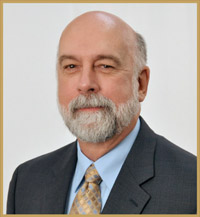Dell's Internet of Things plan: Making it work for real people


The hardware maker and services provider has set up an IoT division, and the first product is an IoT gateway designed to help collect and process data while keeping it secure.
The idea is to process data at the network edge, so decisions can be made faster - issues such as managing energy consumption in device or triggering a call for proactive equipment maintenance. This reduces the time and cost associated with transferring data to the cloud or to a datacenter.
Dell also announced that it has teamed with ThingWorx, an IoT specialist. Thingworx is owned by the industrial conglomerate PTC, which in turns owns other companies which supply CAD, product, service or application lifecycle management (P/S/ALM), and IoT solutions.
According to Dell Services, ThingWorx offers "a combination of technology and business expertise to help customers reduce the time, cost and risk involved in implementing IoT applications".
Most of the work is being undertaken by the Internet of Things Lab which Dell and Intel have set up together to look into innovations like smart buildings and connected products well as "next generation insurance for customers", Dell said.
ZDNet recently spoke to Dell's chief innovation officer, Jim Stikeleather, about the company's move into IoT.
Q: Everybody in the IT business is currently trying to get a hold on the Internet of Things. What's Dell's approach?
Stikeleather: Our approach is just a little bit different. It is different in the nature of the intelligence at the endpoint, in how you collect the information, in how you assemble it and how you analyse, and, above all, how you interface with it.
Because really the value of the IoT will only be realised when all of the different systems and all the sensors are established in their context.
What you have to think about is what the IoT brings that is really different from the old monitoring systems and that is this ability to bring context across a whole variety of systems.What you have to also consider is that the old control systems were very much designed to purpose, while when you look at IoT you have to think more about usage patterns. You are really thinking about how you can make all these systems work for the general public.
It's one thing to have highly trained people working with your systems and another to have the everyday Joe doing it.
So what you need to do is merge everything that has been happening with information technology with everything that happened in the past in everyday control systems.
What we at Dell see is the opportunity to bridge traditional information systems, with the systems that are going to be built up around IoT.
Q: What makes your approach unique?
We are really offering two things. The first is the bridge [gateway] which links the control systems to the information systems and vice versa. That fits in well with some of our other strategies, like the acquisition of Boomi, which provided that same model of bridging the gap between dedicated systems and the cloud in apps like Salesforce.
What you see with the relationship with ThingWorx is the recognition that somebody is likely to be better at this than we are - that is the development of a platform for IoT applications.
Q: Do you have any customers at the moment who can talk about this?
We don't have any we can talk about just yet. We have a number of proof-of-concepts and we have been public that we are working with Intel in a number of areas.
Q: The IoT market is wide open at the moment. What are the key points that Dell can offer?
If you look at Dell in its totality, there are our hardware capabilities, which is where the gateway came from, and our services capability, which is where the tie-up with ThingWorx comes from.
Then we have our investments in the software market. That is where products like Boomi come from and they provide the bridge between cloud and traditional systems.
Another area we are working on is software-defined infrastructure and the IoT. This is addressing questions like: how do you configure the energy part - these huge distributed networks of sensors, controllers, and accumulators? We think our skills and experience can be crucial here.
The other piece is evolution. This is when you look at different people and you start to think about what they are doing and what they are planning on doing, who and what is around them. While this all may start to seem Orwellian, it does mean that you can start to respond to what people need before they know they need it.
This shifts the focus to more predictive and prescriptive analytics, so we can add value to what other people are doing and then use other people to add value to what we are doing.
Q: Can you talk about any relationships you may be entering into with companies working in the IoT space?
You are seeing the ecosystems start to form up and we are in conversations with a number of different organisations - both OEM and direct - so it would be premature to say anything more.
What we are going though now with a number of these bodies is less like a traditional, targeted sales campaign, and more like a courtship and eventual wedding.
Further Reading:
Dell updates Boomi cloud integration platform
Dell launches Wireless Dock to cut cord for laptops, Ultrabooks
Internet of Things: Why your home is a connected device Tower of Babel